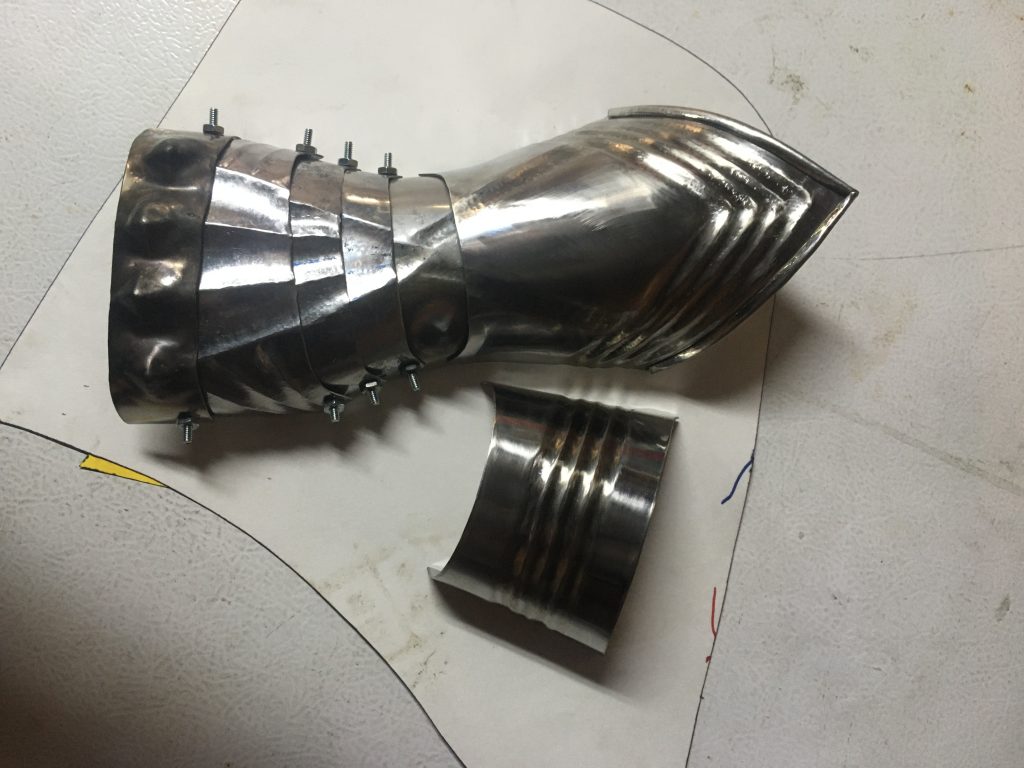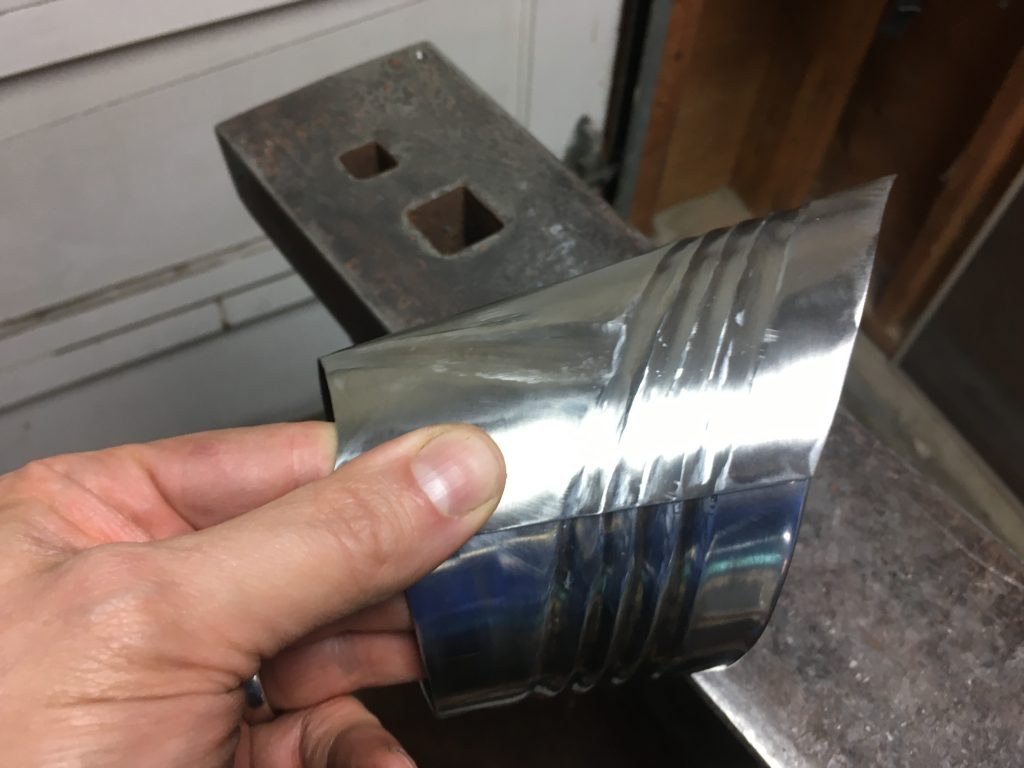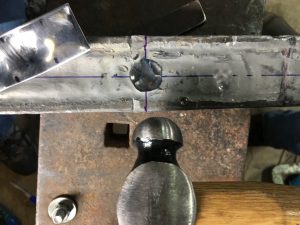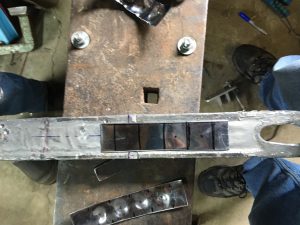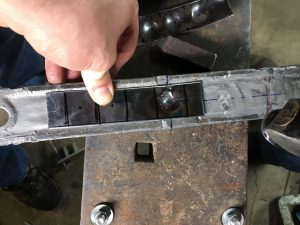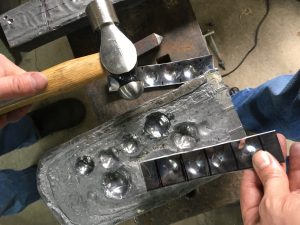While it may not be a requirement to be obsessive when prototyping armour, I’d argue that it helps. “Prototyping” may be the wrong word since much of the armour I’m working on building was “perfected” hundreds of years ago, but it is definitely an iterative process.
- Try a pattern and a set of techniques
- learn a new technique, or modify one you have been using
- realize that this changes the pattern
- Update the pattern and or set of techniques
- …repeat…
Part of doing this well (or at least not doing it badly) is recognizing when you know that you need to do multiple iterations, and determining what this specific iteration is trying to refine. I’m just about ready to finalize the gauntlet pattern that I’ve been working on for almost 20 years, so I thought that I’d share a picture of the latest few iterations
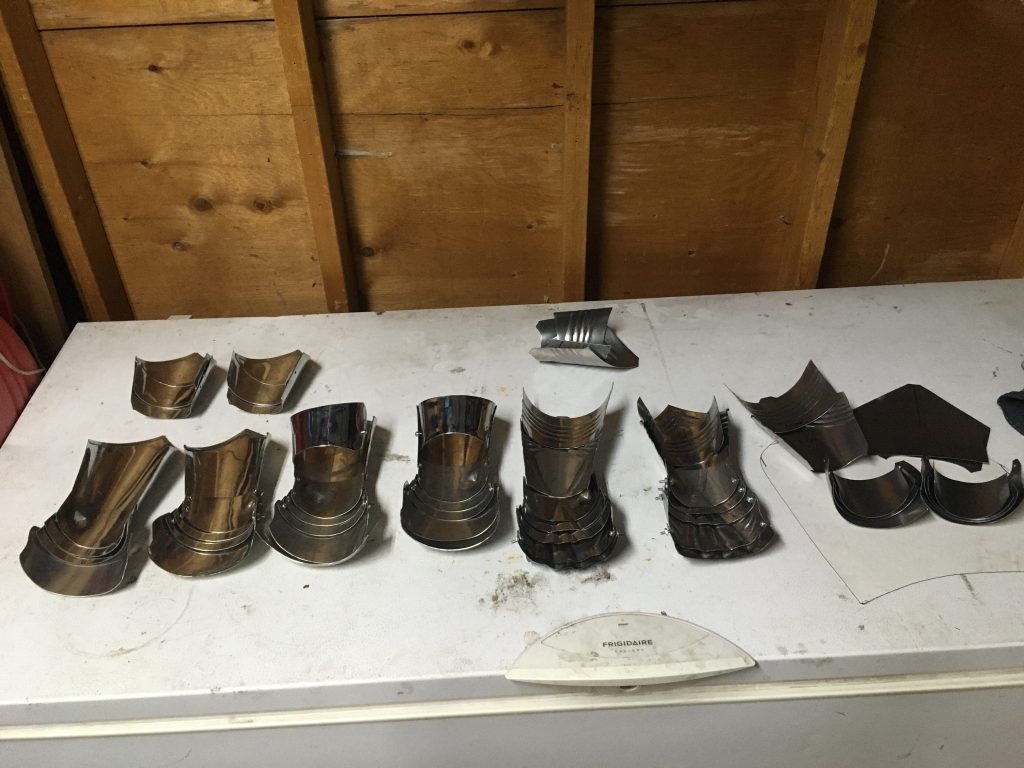
So what’s going on here? On the far left are gauntlets where I was refining the ulnar bump, along with some spare cuff plates since I realized partway in that this pattern (which I hadn’t changed for over a decade) needed to be fixed. The four gauntlets on the left are a “simplified” gothic pattern in stainless steel. These will probably be finished up and used as “loaner” gauntlets, provided as gifts or prizes, or sold.
The gauntlets in the middle (largely complete) are my experiments at the proper gothic fluting and shaping, as well as the knuckle plate design and technique refinement. These are 20 Gauge (0.040″ / 1mm) stainless steel and are reasonably serviceable, although the fluting is rougher than I would like both because I was learning a new technique and needed to figure out how much I needed to round the edges of my fluting hammer and still be able to make crisp “centers” for the chevron fluting. These are likely to be my “practice” combat gauntlets .
The remaining gauntlet pieces are carbon steel: the cuffs in the back of the picture in the middle are 20 Ga 1050, and when heat treated and tempered are likely to be fairly bulletproof. The gauntlets to the right (which are in the early stage of construction) are 22 Ga 1050 (0.032″ / 0.8mm) and are very close to medieval thickness. Assuming that I can do decent heat treatment on these this is likely to be my “production” gauntlet design, and the first two will probably be my “tournament” gauntlets both because they will be pretty, but also because they will be very close the medieval weight, and I’m hoping they will come in at under a pound, a fraction of the weight of most medieval gauntlets.

